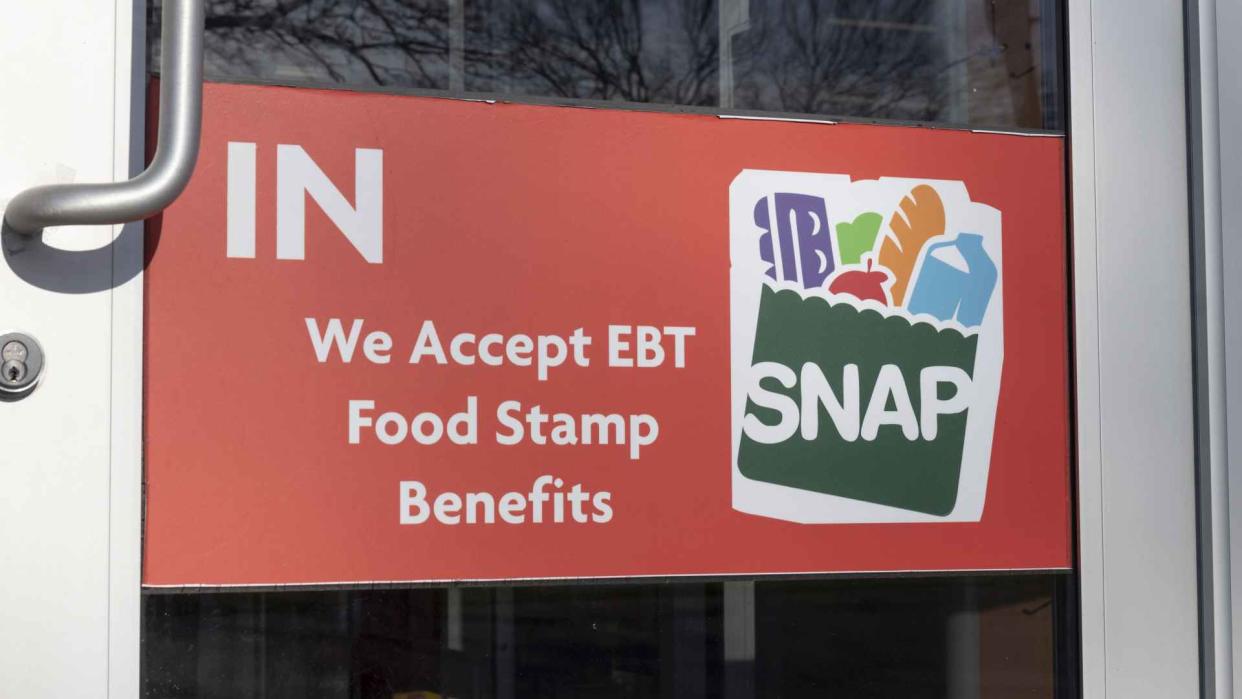How Food Stamps Performed Under Biden and Trump — What Could Be in Store for 2024?

The Supplemental Nutrition Assistance Program (SNAP), formerly called food stamps, is one of our nation’s most important programs, helping to reduce poverty and food insecurity while stimulating economic growth. Former President Donald Trump and President Joe Biden would both say their SNAP policies have succeeded — but have they really?
Check Out: 10 Expenses Most Likely To Drain Your Checking Account Each Month
Learn More: Owe Money to the IRS? Most People Don’t Realize They Should Do This One Thing
Under Trump, low inflation and a thriving economy meant more people had jobs with growing paychecks. As a result, fewer people needed to rely on social welfare programs, including SNAP. According to an op-ed piece published by The Heritage Foundation, food stamp rolls dropped by more than 19% in the first three years of Trump’s presidency, or about 8.5 million people — a federal savings of $11 billion.
Trump had repeatedly claimed that his administration “lifted 10 million people off of welfare,” but FactCheck.org pointed out that this figure may not be correct. Most of the 10 million comes from a drop in SNAP recipients, a figure that has been declining since 2013 as the economy improved over the years.
Additionally, Trump-era policies aimed to cut the SNAP budget by more than 30%, according to the Center on Budget and Policy Priorities (CBPP), and make it harder for Americans to qualify for benefits.
When Biden took office and expanded the food stamps program, the number of people on food stamps increased by 3%, while benefits rose 54% in two years, The Heritage Foundation explained. Administrative costs also exploded, costing taxpayers $120 billion per year — twice the program’s cost in 2019.
The Heritage Foundation alleged that if Biden had achieved that same downward trend in welfare reliance, food stamp rolls would have decreased. Instead, more people are working and going on food stamps. On top of that, inflation has significantly reduced spending power.
So, what’s in store for SNAP in 2024?
Dottie Rosenbaum, a senior fellow with the CBPP, told FactCheck.org that the economy is “the biggest factor in SNAP” enrollment, and “trends in SNAP caseloads follow trends in poverty.” Rosenbaum noted that this trend started before Trump took office and has continued.
“The fact that SNAP has come down shows that it’s working as intended,” Rosenbaum added.
More From GOBankingRates
Dave Ramsey: Why You Shouldn't Buy a New Car/Take Out an Auto Loan This Year
5 Reasons You Should Consider an Annuity For Your Retirement Savings
This article originally appeared on GOBankingRates.com: How Food Stamps Performed Under Biden and Trump — What Could Be in Store for 2024?
